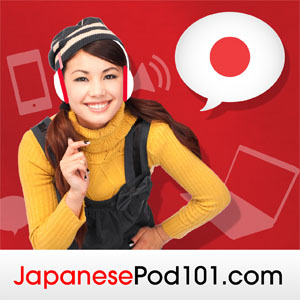
Gengo Japanese S1 #26 - Making the Most of Your Time in Japan

Learn Japanese | JapanesePod101.com (Audio)
Deep Dive
Shownotes Transcript
こんにちは、みなさん。元気ですか?元気ですか?元気ですか?
日本はどうですか?行く
日本に行く日本に行きます I'm going to JapanSo this lesson's conversation takes place atNessan Automobile Company LimitedNow do you remember?Ashley is visiting the headquarters of her companyNessan and is meeting Mr. MatsudaThree people are involved in the conversationThey are
アシュリーさんと松田部長と三岡玲さん三岡さんは松田部長の秘書ですねフォーモル・ジャパニーズ
ミツオカ君をお願いします失礼しますアシュリーさんこちらは秘書のミツオカ君ですミツオカ君こちらはニューヨーク支社のアシュリージョーンズさん初めまして秘書のミツオカレイと申しますアシュリーと申しますどうぞよろしくお願いします
三岡くんじゃあアシュリーさんの今日のスケジュールはこちらですどうぞ 10 時から会議 12 時に銀座キューベイに行くランチミーティング 1 時半にイノベイティブランゲージラーニングに行くプレゼンテーション 4 時半に横浜工場に行く見学 7 時に横浜駅に行く歓迎会すごいスケジュールですね
日本へようこそ。
アシュリーと申しますどうぞよろしくお願いします三岡くんじゃあアシュリーさんの今日のスケジュールはこちらですどうぞ 10 時から会議 12 時に
銀座キューベーに行くランチミーティング 1 時半にイノベイティブランゲージラーニングに行くプレゼンテーション 4 時半に横浜工場に行く見学 7 時に
横浜駅に行く歓迎会うわーすごいスケジュールですね日本へようこそ三岡くんをお願いします失礼しますアシュリーさんこちらは秘書の三岡くんです
アシュリー、ミツオカ君、こちらはニューヨーク支社のアシュリー・ジョーンズさん。ミツオカ君、これはニューヨーク支社のアシュリーです。初めまして。ミツオカレイと申します。アシュリーと申します。どうぞよろしくお願いします。
三岡くん じゃあアシュリーさんの今日のスケジュールは三岡くん Do you have Ashley's schedule for the day?こちらです どうぞ Here it is10 時から会議 Meeting at 1012 時に銀座キューベイに行くランチミーティング Go to Ginza Kyubey at 12 Lunch meeting1 時半にイノベイティブランゲージラーニングに行くプレゼンテーション
すごいスケジュールですね日本へようこそ
日本へようこそ。Welcome to Japan.Right. 日本、Japan、え is a particle that indicates direction.And ようこそ means welcome.So 日本へようこそ means welcome to Japan.Yeah, but Naomi-sensei, why is he saying it now?Well, I think he's being sarcastic.
ああ、わかる。彼女にとっては、日本にようこそ。今は、働きやすい時間だ。そうですね。彼はあなたのようです。私は、松田さんは、外国人との経験を持っていることを知っています。そうですね。そして、彼女たちは、関係を持っています。はい。他にも、このようなサーカスや嘘を聞かない可能性があります。そうですね。多分、仕事場ではありません。
そうですイノベーティブランゲージラーニングですね工場工場
工場工場工場工場工場工場工場工場工場工場工場工場工場工場工場工場工場工場工場工場工場工場工場工場工場工場工場工場工場工場工場工場工場工場工場工場工場工場工場工場工場工場工場工場工場工場工場工場工場工場工場工場工場工場工場工場工場工場工場工場工場工場工場工場工場工場工場工場工場工場工場工場工場工場工場工場工場工場工場工場工場工場工場工場工場工場工場工場工場工場工場工場工場工場工場工場工場工場工場工場工場工場工場工場工場工場工場工場工場工場工場工場工場工場工場工場工場工場工場工場工場工場工場工場工場工場工場工場工場工場工場工場工場工場工場工場工場工場工場工場工場工場工場工場工場工場工場工場工場工場工場工場工場工場工場工場工場工場工場工場工場工場工場工場工場工場工場工場工場工場工場工場工場工場工場工場工場工場工場工場工場工場工場工場工場工場工場工場工場工場工場工場工場工場工場工場工場工場工場工場工場工場工場工場工場工場工場工場工場工場工場工場工場工場工場工場工場工場工場工場工場工場工ら工ら
松田部長 as Mr.松田 because there's really not a good way to translate it into Englishbut this really means managerso it's kind of like manager 松田 Mr.松田 the managerright in English it's less common to call someone by their title or occupationwhereas in Japan it's very commonjust like I keep calling Naomi as Naomi sensei
ティーチャーなおみ。OK, on to the vocabulary. First word.秘書。セクレテリー。秘書。秘書。Next.はじめまして。Nice to meet you.はじめまして。はじめまして。Next.会議。Meeting. Conference.い、ぎ、会議。Next.いく。To go.いく。
いくようこそようこそスケジュールランチミーティングプレゼンテーション
スケジュール
スケジュールプレゼンテーションピーターはじめましてはじめましてはじめましてはじめましてはじめましてはじめましてはじめましてはじめましてはじめましてはじめましてはじめましてはじめましてはじめましてはじめましてはじめましてはじめましてはじめましてはじめましてはじめましてはじめましてはじめましてはじめましてはじめましてはじめましてはじめましてはじめましてはじめましてはじめましてはじめましてはじめましてはじめましてはじめましてはじめましてはじめましてはじめましてはじめましてはじめましてはじめましてはじめましてはじめましてはじめましてはじめましてはじめましてはじめましてはじめましてはじめましてはじめましてはじめましてはじめましてはじめましてはじめましてはじめましてはじめましてはじめましてはじめましてはじめましてはじめましてはじめましてはじめましてはじめましてはじめましてはじめましてはじめましてはじめましてはじめましてはじめましてはじめましてはじめましてはじめましてはじめましてはじめましてはじめましてはじめましてはじめましてはじめましてはじめましてはじめましてはじめましてはじめましてはじめましてはじめましてはじめましてはじめましてはじめましてはじめましてはじめましては
会議会議会議会議会議会議会議会議会議会議会議会議会議会議会議会議会議会議会議会議会議会議会議会議会議会議会議会議会議会議会議会議会議会議会議会議会議会議会議会議会議会議会議会議会議会議会議会議会議会議会議会議会議会議会議会議会議会議会議会議会議会議会議会議会議会議会議会議会議会議会議会議会議会議会議会議会議会議会議会議会議会議会議会議会議会議会議会議会議会議会議会議会議会議会議会議会議会議会議会議会議会議会議会議会議会議会議会議会議会議会議会議会議会議会議会議会議会議会議会議会議会議会議会議会議会議会議会議会議会議会議会議会議会議会議会議会議会議会議会議会議会議会議会議会議会議会議会議会議会議会議会議会議会議会議会議会議会議会議会議会議会議会議会議会議会議会議会議会議会議会議会議会議会議会議会議会議会議会議会議会議会議会議会議会議会議会議会議会議会議会議会議会議会議会議会議会議会議会議会議会議会議会議会議会議会議会議会議会議会議会議会議会議会議会議会議会議会議会議会議会議会議会議会議
こちらこちらは秘書の三岡くんですこちらは
This, this direction, plus the topic marking particle は。So, as for this direction,秘書の三岡、secretary 三岡、くん、polite suffix, Mr. or Ms., referring to a subordinate,です、polite form of the copula, the Japanese equivalent to the English verb to be、
はい
You might hear 君 in a situation where a male boss is referring to a female subordinate.Now, there is one more cultural point that we want to cover.Naomi-sensei, if Mr. Matsuda was introducing Ms. Mitsuoca to a client or people outside the company, what would happen?
うーん、いい質問だよ。彼は「くん」や「さん」の名前を入れることはできないと思う。また、彼は「こちら」を使わないと思う。だから、彼はたぶん、
これは秘書の三岡ですこちらはそう and so さんですこちらは豊田一郎さんです
こちらはアシュリー・ジョーンズさんです。こちらはアシュリー・ジョーンズさんです。
はい違います
ありますわかりますお願いしますます
ちがいます。ちがう。ある。わかる。
そうです。
このように
行く to go 行きますます
私は駅に行く明日私は
I and the topic marking particle は駅 station に particle that indicates movement towards a place.So 駅に to the station 行く to goSo one more time.
明日私は駅に行く
いく with 行きます So 明日私は駅に行きます Tomorrow I'm going to the station
行きますは行くよりも正しく言います。行きますは行くよりも正しく言います。
When the particle ni is used with iku, it usually indicates that one is going to be placed with a purpose.So, for example, to go to the station, to catch the train.To go to the airport, to catch the plane.So, let's use this again.How would you say, I'm going to the airport tomorrow?
明日私は空港に行く。I'm going to the airport tomorrow.Of course, if you want to say it politely, that would be 明日私は空港に行きます。ナミ先生、はい。It's okay to shorten this sentence by dropping the 私は、right?そうですね、right, good point.When it's obvious that you're talking about yourself, you can drop the 私は part.
明日空港に行きます
明日 means tomorrow.はい。This is referring to the time.Now, if you want to get more specific with the time, you can put that instead of the word 明日, right?はい、そうです。But here's the tricky point.You need to add particle に after the time.For example, 一時に。At one o'clock.二時に。At two o'clock.The particle に has a lot of usages, but in this case に indicates time.However,
はい空港に行きます一時に空港に行きます
2 時に空港に行きます。OK, let's recap with a quiz. The quiz will be multiple choice. We'll give you a question and three possible answers. Your job is to guess the answer, OK? First question. Which of the following phrases is used when you meet someone for the first time?A. はじめまして。B. いらっしゃいませ。C. ようこそ。The answer is…
A はじめまして both いらっしゃいませ and よーこそ mean welcome and はじめまして means nice to meet youOK next questionHow do you say to go in Japanese?A わかる B ある C いく the answer is
See 行く To go わかる Is to understand ある To exist or to have そうです That concludes this lesson. In the next lesson, Ashley is going to a welcome party for her and she's going to give a small speech in front of everyone.So you'll review how to introduce yourself in a formal situation. じゃあまた。三岡くんをお願いします。失礼します。アシュリーさん。
こちらは秘書の三岡くんです三岡くんこちらはニューヨーク支社のアシュリージョーンズさんはじめまして秘書の三岡玲と申しますアシュリーと申しますどうぞよろしくお願いします三岡くんじゃあアシュリーさんの今日のスケジュールはこちらですどうぞ 10 時から会議 12 時に銀座キューベイに行くランチミーティング
1 時半にイノベイティブランゲージラーニングに行くプレゼンテーション 4 時半に横浜工場に行く見学 7 時に横浜駅に行く歓迎会すごいスケジュールですね日本へようこそ